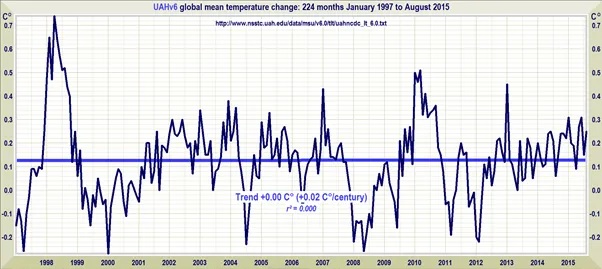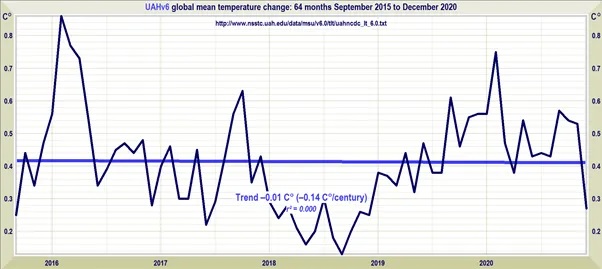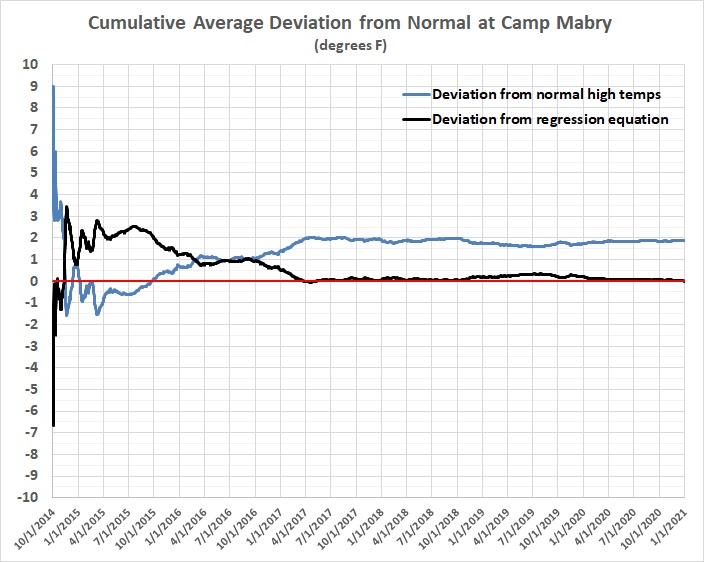Much has been written (pro and con) about the “pause” in global warming climate change the synthetic reconstruction of Earth’s “average” temperature from 1997 to 2012. That pause was followed fairly quickly by a new one, which began in 2014 and is still in progress (if a pause can be said to exhibit progress).
Well, I have a better one for you, drawn from the official temperature records for Austin, Texas — the festering Blue wound in the otherwise healthy Red core of Texas. (Borrowing Winston Churchill’s formulation, Austin is the place up with which I have put for 18 years — and will soon quit, to my everlasting joy.)
There is a continuous record of temperatures in central Austin from January 1903 to the present. The following graph is derived from that record:
A brief inspection of the graph reveals the obvious fact that there was a pause in Austin’s average temperature from (at least) 1903 until sometime in 1999. Something happened in 1999 to break the pause. What was it? It couldn’t have been “global warming”, the advocates of which trace back to the late 1800s (despite some prolonged cooling periods after that).
Austin’s weather station was relocated in 1999, which might have had something to do with it. More likely, the illusory jump in Austin’s temperature was caused by the urban heat-island effect induced by the growth of Austin’s population, which increased markedly from 1999 to 2000, and has been rising rapidly ever since.
Related reading:
Paul Homewood, “Washington’s New Climate ‘Normals’ Are Hotter“, Not a Lot of People Know That, May 6, 2021 (wherein the writer shows that the rise in D.C.’s new “normal” temperatures is due to the urban heat-island effect)
H. Sterling Burnett, “Sorry, CBS, NOAA’s ‘U.S. Climate Normals’ Report Misrepresents the Science“, Climate Realism, May 7, 2021 (just what the title says)




